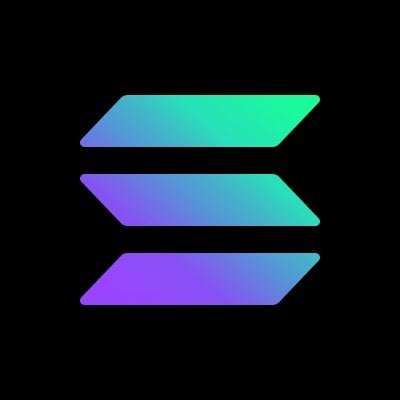How to view Backpack: a super app that integrates NFT + wallet + exchange?
Written by: Haotian
How to view the recently discussed @Backpack wallet? Exchange? NFT community? You see, many people may feel confused about how to position BP when they first encounter it. In my opinion, it is a "super application" that integrates NFT + wallet + compliant exchange, and it can even be understood as a "closed-loop ecosystem" that nurtures users in one stop through the DApp mini-program under the xNFT protocol + wallet exchange. Why? Next, I will briefly share my understanding.
What is Backpack really laying out?
If you don't look at the whole picture of what Backpack is doing, it's easy to fall into a fragmented understanding. Some people are fond of the NFT community culture of Madlads, some enjoy the smooth interaction experience of the Backpack wallet, while others are optimistic about its new trading paradigm that integrates on-chain and off-chain applications for exchanges and wallets. How to say? These are all typical characteristics of BP, and compared to the liquidity market that is completely separated from the current blockchain ecosystem and connected through composability, what BP is doing always gives people a sense of a closed-loop ecosystem like Apple.
In fact, in a completely open-source blockchain protocol composable market, doing closed-loop things will always seem somewhat unconventional. However, looking at it over a longer period, has there been a loser in the ongoing competition and battle between Android and iOS? A closed-loop ecosystem based on community attributes will have a long process of popularization where different product lines break through one by one. Behind the closed product lines is a strong community cohesion + leading product usage experience + powerful resource consolidation capability, which will form a combined force at some point in time, becoming a competitive barrier that others cannot surpass. With "Apple" in front and "Xiaomi" behind, both are making such business layouts.
2) The entire product line of Backpack at the current stage has a clear imprint of the Solana ecosystem, which means its development will be heavily bound to the Solana ecosystem. To some extent, Backpack has built a Native wallet + exchange for the Solana ecosystem, as well as a set of xNFT mini-program DApp application market.
In the short term, Backpack has clear advantages and disadvantages compared to other products and protocols in the entire blockchain environment. For example, compared to general CEXs, Backpack cannot timely cover the entire blockchain ecosystem to seize various first-mover advantages in listing coins to attract a broad user base. However, undoubtedly, some projects with obvious Solana genes can ferment and grow within Backpack, and some early users who heavily participated in the Solana ecosystem will also receive greater expected market returns.
What challenges and difficulties does Backpack face?
Because of this, Backpack will inevitably encounter certain resistance in the process of expanding the market, and the airdrop distribution event is a typical example. Objectively speaking, due to compliance factors, Backpack screens quality projects to distribute airdrops to users who contribute trading volume. This is a long-term incentive and gain behavior. Looking at it over a longer period, users of BP will definitely have good returns. For users, it is equivalent to earning stable "high annualized returns" on a certain exchange. However, as mentioned above, user benefits are a secondary distribution of resources consolidated by the platform, and the intensity of user participation, amount of capital invested, and, crucially, the expected release of chips by the project party all need to be coordinated by the platform. If you look at the overall returns over a longer period, it’s fine, but if you focus solely on a single instance of volume brushing + airdrop returns, it becomes very difficult. Moreover, if not handled properly, it will definitely face backlash from public opinion.
Why is this the case?
Essentially, Backpack is a platform that gathers and integrates resources, attracting quality project parties to distribute airdrops, and then attracting quality users to drive growth. This will be a long-term dynamic tradeoff process. The platform cannot guarantee that every operational activity will allow users to obtain absolute returns 100% of the time. After all, the chips are distributed by the project party, the total amount of airdrops is constant, and the number of users and capital participating in the airdrop activities is uncontrollable. When there are many monks, the porridge will definitely be less; it's a very simple principle.
Essentially, this is an incentive process for chip distribution, with the platform aiming to attract new users and increase activity as a "reward mechanism" for user participation and retention. How to avoid being "rug pulled" is actually a technical task. Rather than taking on the risk of loss with a short-term mindset to seek excessive arbitrage returns, it is better to extend the cycle and calculate returns from a longer time dimension. On one hand, the Airdrop benefits obtained by the platform through resource premiums already have top resource advantages (Pyth, W, etc.). On the other hand, Backpack's own platform growth expectations (token issuance) are also a "compensatory" benefit that will land at some point in the future.
How should we define the industry value of Backpack?
I tend to view Backpack as a "super application" derived from the high-performance layer1 public chain of @solana.
In the Bitcoin and Ethereum ecosystems, everyone is happily telling stories about layer2 infrastructure, while the application stories have been delayed at least until the next bull-bear cycle due to unmet expectations. In contrast, the Solana ecosystem is quite different. Surrounding the high-performance public chain, it attracts off-chain incremental users through MeMe and plans a super narrative of DePIN to lay the groundwork for future application landing, during which a large number of diverse gameplay such as DeFi, Games, NFT, and Payment have emerged. There is a feeling that the Solana ecosystem has been developing with the genes of web2 + web3 from the very beginning, so developing "applications" is an unavoidable issue and will become the main theme of the current bull market in the Solana ecosystem.
At this stage, almost every blockchain system faces the objective factor that telling B-end stories has a larger imaginative space than C-end applications. Therefore, while everyone is enthusiastically playing with layer2 and other infrastructure, the Solana ecosystem has grown a super application paradigm that integrates NFT + wallet + compliant exchange. NFTs create community culture and stickiness, wallets serve as the entry point for user participation and DApp application distribution centers, and compliant exchanges provide compliant channels for deposits and withdrawals, connecting with the real world.
In the current context where the entire blockchain ecosystem is criticized for being overly focused on financial hype, Backpack's super application paradigm seems to be inputting a mature product line growth model of web2 into the web3 environment. This will have a certain leading significance for the maturity of the industry by intensifying the landing of application ecosystems and popularizing the philosophy of mature web2 product capabilities.
The above
Based on the above observations, it is not difficult to understand some of the issues Backpack currently faces:
1) The strong community attribute is both an advantage and a drawback for large-scale expansion. A significant portion of early participants, including myself, may feel passively drawn into the community;
2) The emphasis on compliance attributes is the foundation for its future growth, but this also limits the diversification of early products and models, requiring sustained long-term growth drivers;
3) "Super applications" are always a good story, but when can the entire Crypto ecosystem move beyond infrastructure and focus more on the landing of application stories? This is not just a challenge faced by the Solana ecosystem; builders across the entire Crypto chain environment are all striving for this.
I have often said that Solana, as a high-performance layer1, is a "forward-looking" public chain form leading the progress of Crypto infrastructure architecture. It seems that now I need to add a footnote to this judgment: the DApp mini-program under the xNFT protocol and the integrated closed-loop system of Backpack software are also "forward-looking" in leading the integration and landing of web2 and web3 applications.
Note: Many people are likely paying attention to Backpack due to its growth expectations as "FTX 2.0," wanting to know what kind of development height a project with FTX genes and equivalent background, which can also learn lessons and "restart," will achieve. Let's wait and see.












